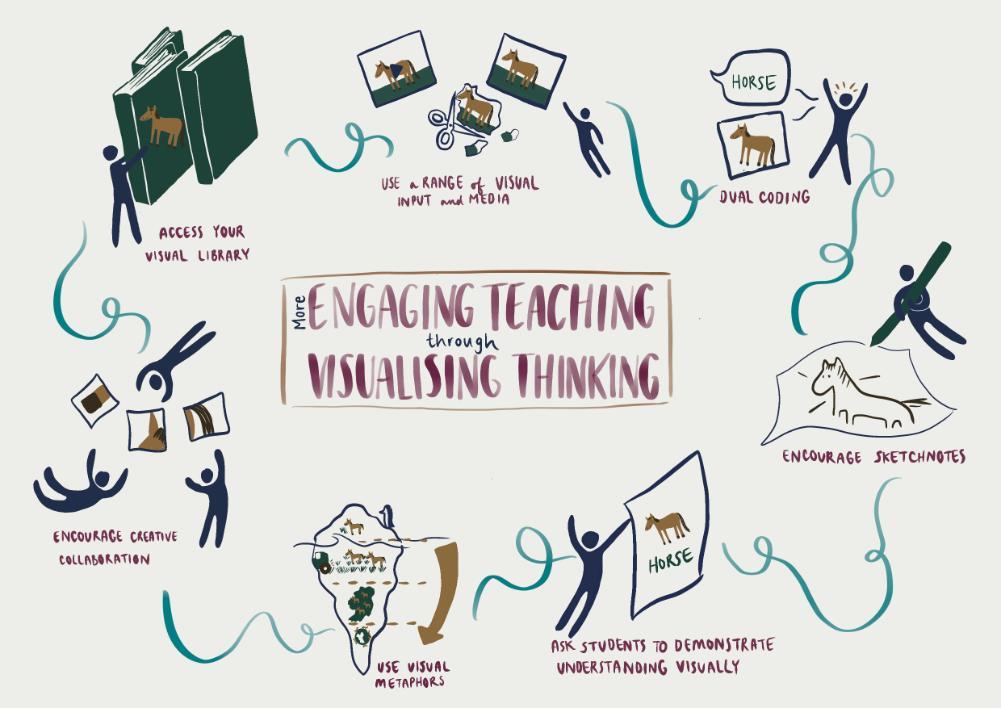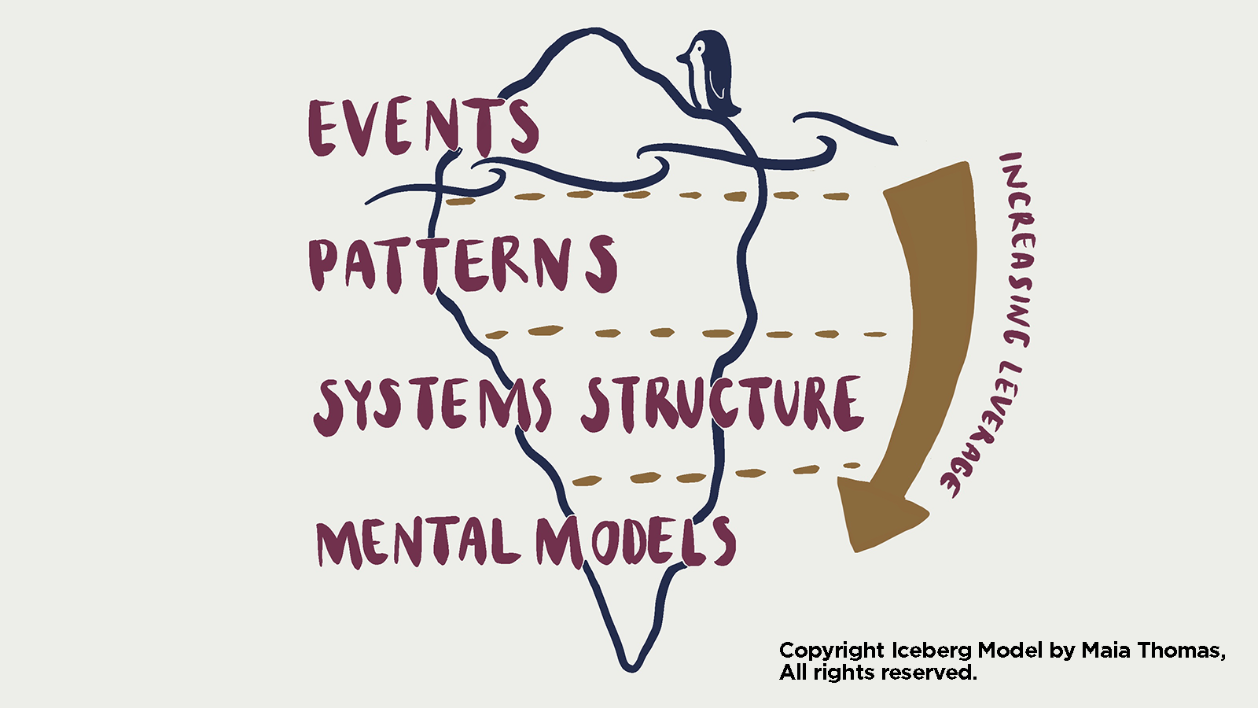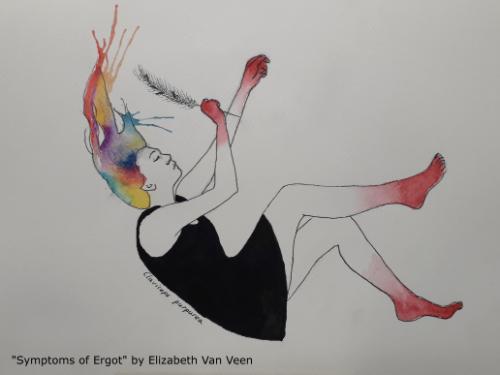- CIRTL Homepage
- Meet our Team
- Resources
- Short Guides
- Short Guide 1: Starting Well
- Short Guide 2: Scaffolding Learning
- Short Guide 3: Icebreakers
- Short Guide 5: Discussions for Online Learning
- Short Guide 4: Visualising Thinking
- Short Guide 6: Universal Design for Learning
- Short Guide 7: Group Work
- Short Guide 8: Reimagining Practicals
- Short Guide 9: Assessment in the Age of AI
- Universal Design for Learning
- CIRTL Series
- Sustainable Development Goals Toolkit
- Learning Design Workshops
- Connected Curriculum
- Group Work
- Civic Engagement Toolkit
- Learning Outcomes
- DigiEd Reading List
- Ethical Use of GenAI Toolkit
- Short Guides
- Professional Development
- Postgraduate Certificate in Teaching and Learning
- Diploma in Teaching and Learning in Higher Education
- MA in Teaching and Learning in Higher Education
- International Scholars
- Postgraduate Modules in Teaching and Learning
- Digital Badges
- Postgraduate Certificate in Professional Practice and Leadership
- CPD Certificate in Digital Education
- Research your Teaching
- Projects
- Events
- Office of the Vice President for Learning & Teaching
Short Guide 4: Visualising Thinking
Explore this page
1. Lessening Cognitive Load through Visuals
The ability to retain information and to recall and apply it when required is a crucial part of learning. Teaching helps lessen the ‘cognitive load’ of encoding new information in long term memory, by making complex ideas more understandable and by motivating students to engage through the careful design of learning. Dual coding (Clark and Paivio, 1991), the use of both verbal and visual information, improves all parts of the learning process and can be a powerful tool to use in teaching and communication to enhance student learning. This is especially true when teaching online.
This short guide will suggest ways in which you can unlock your visual library for enhanced student learning, as well as give practical examples which you could integrate into your teaching to encourage more visual and collaborative modes of engagement by students. A longer resource is also available on the CIRTL Resource page

2. Basics of Visual Thinking
How do I make my teaching resources more engaging?
Include more visual resources in your teaching such as images, video, infographics etc. These can be carefully curated from other sources, with appropriate attribution, rather than created from scratch. Use keywords in search engines to identify possible images and click advanced settings to select for images which are free to use.
Visualising thinking shouldn’t be at the expense of accessibility. Make sure you use alt-tags for images whether in PowerPoint, Canvas or elsewhere. Narrating slides and visual prompts will also help as will sharing resources ahead of any live event.
I don’t think one image can say everything I want to!
Possibly not - sometimes we can try to convey too much with one image, and perhaps a series of images might work instead. We can’t assume images will do all of the work, but the mix of text and visuals can be very powerful. When in doubt, keep it simple. Visuals should supplement the text, aid understanding and enhance the retention of information.
But I’m not an artist!
You don’t have to be an artist to use visuals well. There are thousands of images out there already, and many are free to use. Many of us are better at forming connections between words and images than we think we are, and we are often surprised at how similar our visual libraries are.
Play with images, see what works and what doesn’t. If you need more help, there are many illustrators and visual practitioners who may be able to support you to make visuals for your work.
How do I access my ‘visual library’?
A simple exercise to unlock your creative brain is to engage in a Graphics Jam. Start by drawing a representation of a series of words or ideas really quickly (10 seconds or less per word) e.g. dog, house, community, education etc. You could also use this activity as an icebreaker with students or research collaborators (see Short Guide #3: Icebreakers) or it could provide an introduction to sketchnoting (Schwartz, 2019), where visual notes are used to aid students’ learning.
Develop this further by considering one of the more difficult concepts in your discipline or subject area – can you identify an image or series of images that could help explain this concept? Why did you think of this image? Does it describe what you want it to?
Should I be creating engaging materials or encouraging students to?
Both! One way to do this is to use Visual Metaphors, which allow us to describe complex ideas using something more familiar. In teaching they can be used both as a communication tool, allowing you to explain a concept, but they are also a useful analytical tool to enable students to interrogate an issue and demonstrate understanding. What visual metaphors are common in your discipline or subject area?
Models like the iceberg model and the tree model are good places to start. When using either model first ask students to engage with some content (reading, video, podcast, data etc) and then use the iceberg model, for example, to unpack and making sense of the content. A next step could be to ask students to create their own visual metaphor to demonstrate their understanding.

3. Tools to support Visualising Thinking in an online classroom
There are a range of online and offline ways to engage people in visual learning and teaching. One really effective tool for working creatively is an interactive, digital whiteboard, such as Padlet, Google JamBoard, Miro and Mural. This allows participants to collaboratively create images, collages, mind maps etc. The resulting visual can then be exported as a pdf and shared with the class. The UCC supported interactive whiteboard is Google JamBoard which is part of the G Suite for Education and can be linked to from your module on Canvas.
Students can create their own library of JamBoards, or a lecturer can pre-prepare boards and share links with students. Sometimes tangible work using a pen, paper and real objects is more immediate – consider encouraging students to draw and upload images (building on the earlier Graphic Jam idea).
Further resources
Clark, J. and Paivio, A. (1991) Dual Coding Theory and Education. Educational Psychology Review, 3, 149-210.
Ecochallenge (2020) “A systems thinking model: the iceberg”. Ecochallenge. Available at: https://ecochallenge.org/iceberg-model/.
Hayes, T. (2020) “Obstacle Tree”. Creativity and Change. Available at: www.creativityandchange.ie/exercise/obstacle-tree/
Schwartz, K. (2019) “Why Teachers Are So Excited About the Power of Sketchnoting”. KQED. Available at www.kqed.org/mindshift/54655/why-teachers-are-so-excited-about-the-power-of-sketchnoting
The Learning Scientists (2018) Dual Coding. The Learning Scientists podcast. www.learningscientists.org/learning-scientists-podcast/2018/2/7/episode-12-dual-coding
Acknowledgement
This short guide and longer resource on Visualising Thinking was developed collaboratively with Maia Thomas. Maia is a Cork based graphic harvester and illustrator who specialises in using visual tools to make complex information more accessible and engaging.
Preparing for September
This section includes reflections from staff across the University on what worked well in the past and what they are planning in their future teaching:
I teach on the Diploma in Food Manufacturing Management and I have started using Miro, a visual collaboration tool, to bridge and connect students’ learning from our monthly workshops. We visually capture learning from one workshop to the next using readily recognisable industry images, and we scaffold the learning throughout to enable cross functional and interconnected thinking and application of learning. The rationale for this is two-fold. Within the food production workplace, our students use visual management tools, so visual tools enable a collective entry point for student learning. Furthermore, it helps learners to blend transversal and technical learning, e.g. recognising the importance of teamwork in financial planning. The use of visuals also enables greater inclusion due to communications challenges that may exist in our multicultural classes.
Kathy Kirwan, Food Industry Training Unit
I've coordinated a final year, ‘Plant Pathology’ module in the School of BEES for over decade and in the last number of years I've incorporated a novel artistic element as a form of continuous assessment. In collaboration with the Crawford Gallery, final year BEES students (a mix of plant scientists, zoologists, ecologists and environmental scientists) tour the gallery's permanent and visiting exhibits in a workshop designed to explore the theme of visually communicating science (and non-science) topics. The students are then asked to create their own artworks over the course of the module. Except that the artwork must link to a topic covered in the module (even very loosely), students have free reign over the methods, media and form used.

For this coming academic year, I will establish if an online exploration of the gallery's collection should replace the physical visit. Depending on the restrictions in place at the time, this may or may not be necessary. Students in the past presented their work at a group session (c. 50 students) and this is unlikely to be possible this year. I will explore an online exhibition of the work which will meet restrictions as well as potentially allowing greater public access to the artworks.
Eoin Lettice, School of Biology, Ecology and Earth Science
In my module, The Politics of Racism, students create an academic poster as one element of their continuous assessment. Through designing a visual representation of their essay plan on one A4-sized page (using Google Slides), students are encouraged to be succinct in articulating the aim and objectives of their research and relevant key theoretical concepts and to use visual imagery rather than text to communicate their arguments. The intention is that students will crystallise their ideas and identify topics that are clearly focused and specific; stripping away the text enables them to better focus on the purpose and direction of their work. In the past students have presented their work in class on "Poster Day". In explaining their poster content to their classmates and answering questions about their chosen research topic, students can identify weaknesses in their essay plans which they can address before final submission. This module is now taught online, so in the future, I will invite students to showcase their posters on Canvas and hope to find interesting ways of engaging with the students that encourages a similar quality of interaction as the 'real world' poster event.
In an exercise designed by their lecturer, Nora Furlong, the Masters in Youth Arts and Sports Education students produce a creative journal as part of their assessment. This journal is an important documentation of their professional development through which students reflect on their practice using artistic skills. Students have used various creative techniques, such as calligraphy, sewing, knitting, painting, photography, collage, embroidery, etc. to embellish their work. The beautiful journals they produce often become cherished pieces of artwork and are an impressive testament to their becoming as creative youth practitioners. Creative journaling is an effective method of assessment in any course that emphasises student reflection on personal and professional development.
Eileen Hogan, School of Applied Social Studies
Training and Support
Getting Started webpage
This webpage introduces both academic and professional staff to the first steps in preparing to teach (and support teaching) remotely in September. Guidance is provided on how to teach remotely, the importance of Canvas, what tools to use and when, and signposting you to the relevant training and resources available in this regard.
Teach Digi Summer Training
Learn from academic and instructional designer Dr. Sarah Thelen as she delivers weekly asynchronous recordings structured around Think, Plan, and Teach and supported by Live Q&As. A great entry point for those who have their curriculum and learning activities already prepared.
Canvas training
Do you want to learn how to use UCC's virtual learning environment more effectively? Look no further. Sophie Gahan of the CDE is delivering weekly Canvas training over the summer.
CIRTL Learning Design workshops
Are you thinking about how you will teach in September, January, and beyond? The Learning Design workshop guides you through some collaborative structured exercises to provide a robust framework for curriculum and learning design. Patrick Kiely of CIRTL will host these workshops throughout the summer.
AVMS Guide to online video and collaboration
Panopto is not just about lecture capture you know? MS Teams is not just for meetings. Get oriented to the full capability of the UCC's video tools. A great starting point before pressing the record button!
ITS Teaching and Working remotely (tools)
Microsoft Office 365, Google Suite for Education, and everything else. A great resource for those who want to review and learn about all of the tools we have available in UCC.
UCC Skills Centre
Supporting students through the closure and now a comprehensive resource for September and beyond. See where you can direct your students to help them reach their potential.

